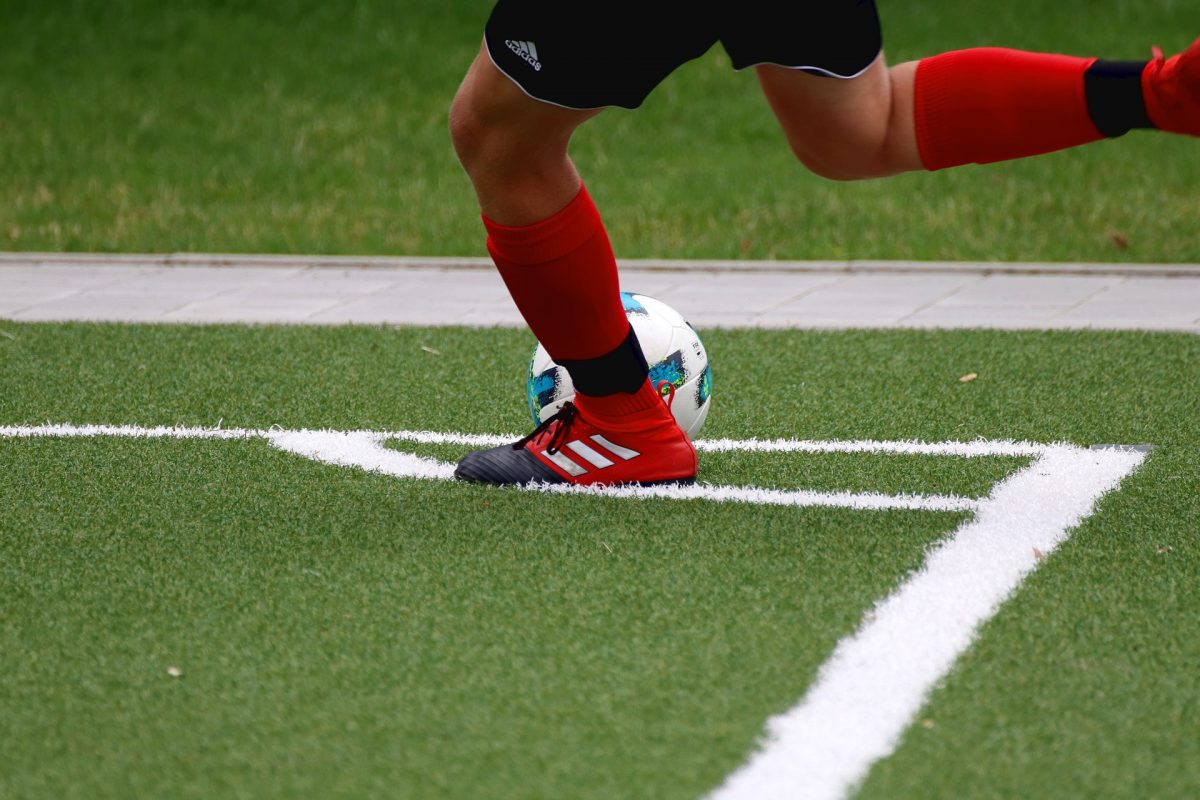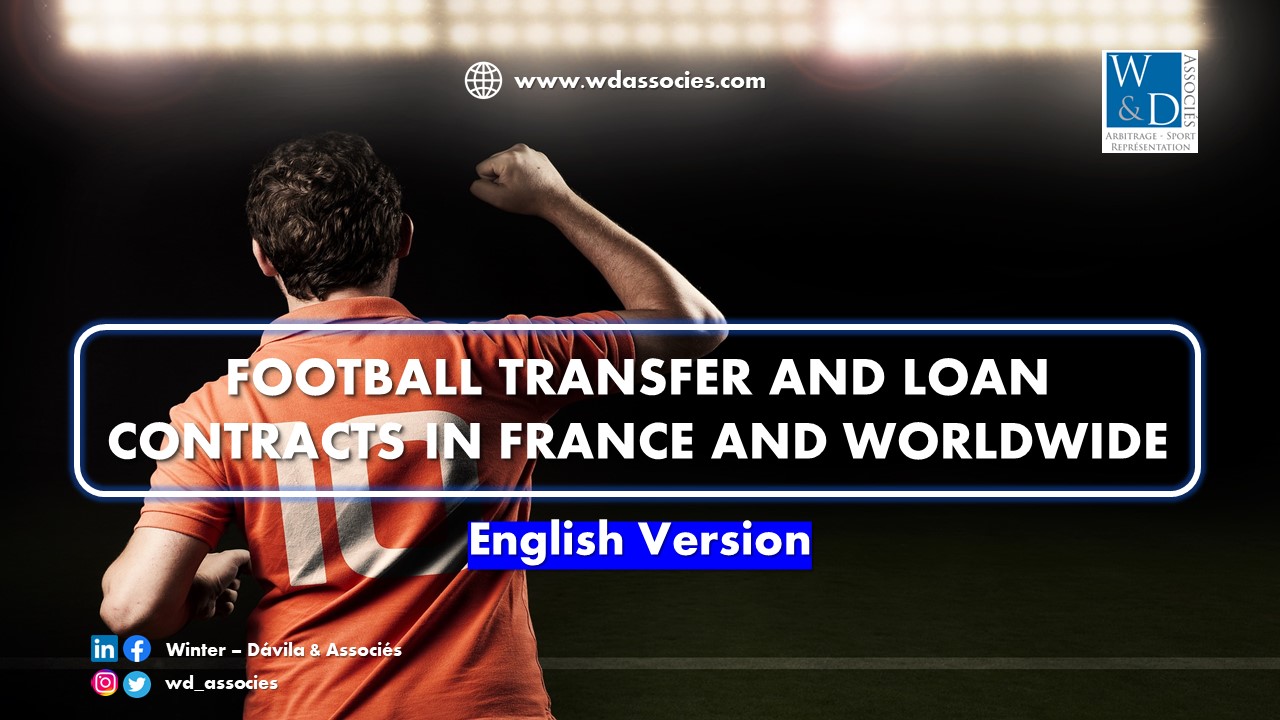Published and translated by the firm Winter – Dávila & Associés
Paris, 3 January 2023

Author: David Winter
Lawyer in France and Spain, graduated from the Université Paris 1 Panthéon – Sorbonne (France). David has been a member of the Paris Bar Association since 2012 and of the Madrid Bar Association since 2018. He has the distinction of being a founding partner of Cabinet Montmartre, a prestigious law firm in Paris.
In addition, thanks to his experience in representing companies and individuals, David has been accepted to become a member of the Association of Lawyers Representing Sportsmen and Women (“A.D.A.M.S.” in French), whose insertion helped him to be included in the list of Lawyers Representing Sportsmen and Women of the Paris Bar.
📍Versions of the article availables in others languages:
🇪🇸 Versión en Español
🇫🇷 Version Française
Do you need lawyers in France? Do not hesitate to contact us!
A new year is beginning and, therefore, a new mercato period… This year’s is special because of the end of an extraordinary World Cup in the true sense of the word, because of its course, in the middle of the sporting season, because of its controversies, especially extra-sporting, and because of its epic final, which left the French bruised but filled with joy all the fervent Argentinian fans…
This is an opportunity to analyse the two main operations that will take place this month: transfers and loans of professional players between football clubs.
We will start with an overview of the texts in force, first at international level and then more specifically in France, before looking specifically at transfer and loan contracts in football.
YOU CAN ALSO READ: FIFA solidarity contribution
1. The texts in force
The cornerstone, at international level, of player transfer and loan operations is the famous FIFA Regulations on the Status and Transfer of Players, commonly known as the “RSTP” or “FIFA Regulations”.
In particular, we can mention article 5bis, which prohibits bridging transfers, article 6, which describes the periods during which players can be registered with the federations, which concerns both transfer and loan operations, article 10, which focuses on the loan of professional players, articles 19 and 19bis, which recall the prohibition of transferring underage players and the few exceptions provided by FIFA….
It also recalls other essential principles which have a direct impact on the operations covered by this article, such as the respect of contracts, which can only be terminated by mutual agreement or on expiry, the minimum and maximum duration of the employment contracts of these players, the cases of termination for just cause, etc.
In France, the following texts apply:
– The Regulations of the French Football Federation, which provides for licensing and registration mechanisms with the Federation, the transfer of players and includes the RSTP (or “FIFA Regulations”) for international transfers;
– The Administrative Regulations of the Professional Football League, which describe, inter alia, the procedure for the approval of players’ employment contracts, the system of licensing players to participate in competitions, the possibility of establishing priority and preference clauses between clubs, but prohibits partnerships between clubs, etc.
– The Professional Football Charter, which deals with the different statuses of players, the duration and approval of contracts, training bonuses, the prohibition of release clauses, etc.
– The Sports Code, which regulates the fixed-term contract of professional sportsmen and women, institutionalised by a law of 2015 and which would merit a study of its own.
YOU CAN ALSO READ: The protection of minors in football
2. The transfer contract
The legal nature of a transfer contract from one club to another has long been the subject of debate. There has been talk of the transfer of an economic right, a licensing right, a service provision, etc.

In reality, there seems to be a consensus today that it is a “mutuus dissensus”, i.e. the buying club pays for the selling club to agree to terminate the player’s contract.
It is therefore a legal transaction in three stages:
1/ Mutually agreed termination of the employment contract between the player and his employer, without compensation.
2/ Signing of a new contract between the player and the purchasing club.
3/ Agreement between the two clubs on the financial conditions of the transfer.
From a more practical point of view and in relation to the drafting and content of these acts, several clauses must be included in the transfer contract and, in particular, certain suspensive conditions without which the contract cannot take effect.
In addition to the fixed remuneration, a variable remuneration, depending on the player’s performance and future contracts, is nowadays often also included.
Furthermore, the regulations prohibit certain clauses: for example, making payment of the transfer fee conditional on the issue of an international transfer certificate (ITC), or the signing of minors under 16 years of age……
On a formal level, international transfers are registered through FIFA’s Transfer Matching System (TMS), which is listed in Annex 3 of the FIFA Regulations, while national transfers (in France) are registered through iSphere, which replaces IsyFoot.
YOU CAN ALSO READ: Training compensation in football
3. The loan contract
While the nature of the transfer operation has been the subject of much debate, the nature of the loan has been less so.
Well, it is also a tripartite contract whose purpose is to suspend the initial employment contract and sign a new employment contract. At the international level, it is provided for, as mentioned above, in Article 10 of the RSTP.
The main provisions are as follows:
– Obligation to conclude a written agreement specifying the terms and conditions of the loan (“loan agreement”), including duration and financial terms;
– Suspension of the obligations under the contract with the former club, unless otherwise provided;
– Minimum duration between two registration periods and maximum of one year;
– Right of the player to return to his former club if the loan contract is terminated before the agreed end;
– Limitation of the number of loaned or loaned players to 6 from July 2024.
In France, on the other hand, the Football Charter applies, Articles 266 and 504. The notable differences are that the limit is set at 7 players for lending clubs and 5 for borrowing clubs, and that a club may not lend or borrow more than two players to the same club.
In conclusion, given the range of applicable rules, both at international level (FIFA) and in national legislation, and the interpretation of these rules, whether by state courts or arbitration tribunals, it is best, when carrying out a transfer or loan, to be particularly attentive to the wording of the contracts, as they are the main vehicles of the operation.
If you liked this topic, we invite you to share the article, comment on it and also to visit the rest of publications in the social networks and platforms of Winter – Dávila et Associés
If you want advice related to the subject of the article, do not hesitate to contact us! (email: contact@wdassocies.com)
Original language of the article: Spanish
LEGAL NOTICE: This article has been prepared for informational purposes only. It is not a substitute for legal advice directed to particular circumstances. You should not take or refrain from taking any legal action based on the information contained without first seeking professional, individualized advice based on your own circumstances. The hiring of a lawyer is an important decision that should not be based solely on advertisements.
This article was published by Winter – Dávila & Associés, an international law firm based in Paris, in France, represented by lawyers specialized in sports law, corporate law, arbitration and representation.








My name is sorafel
I am 23 years old
Beitar Jaffa lsrael Club
My function: Right Midfielder also Defensive Midfielder
Weigh: 64
Height: 1.74
Good morning
I’m fine, how are you?
I want to develop in football and make it a profession
I have great motivation and strength and determination. Today I play regularly in a soccer team: Club Beitar Jaffa in Israel and invest every day.
I would love to meet and talk to think together about options to fulfill the dream and become a professional soccer player.
I would love to set up a meeting and if suitable we will look at how we can cooperate and work together.
Thank you very much and have a good day,
Sorafel Berlia
I appreciate you very much.